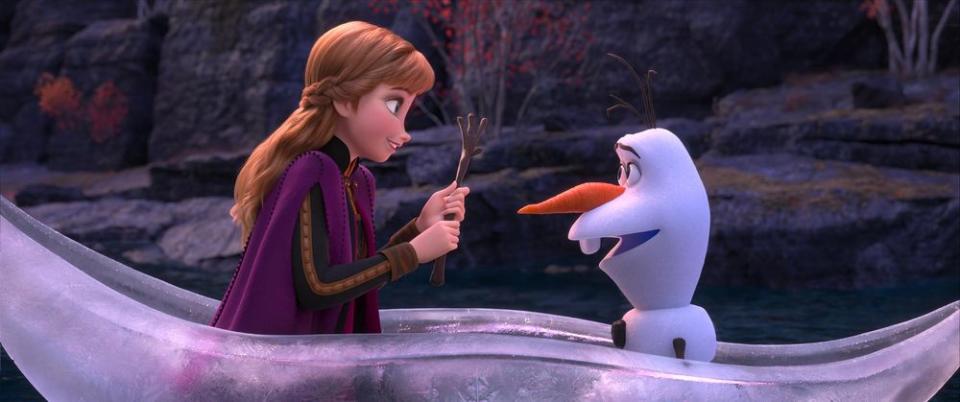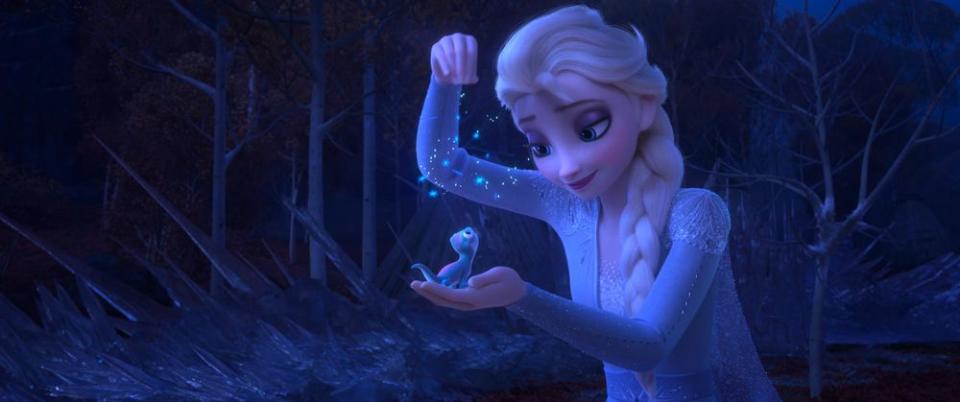Does water have memory? And 4 other questions from Frozen 2
Warning: This article contains spoilers about Frozen 2.
With Frozen 2 opening up more of Elsa and Anna’s kingdom of Arendelle to audiences, the film may also make you wonder how some of its concepts relate to the real world. Here, we attempt to answer some of the biggest scientific questions fans may have after seeing the movie.

Does water have memory?
Not to “but actually” the exuberant, fact-spouting Olaf the snowman, but the notion that water has memory is debatable at best. While this theory holds significant emotional weight within the context of Frozen 2, water memory as defined by the substance’s capability to retain a memory of substances previously dissolved in it is not a theory accepted by the scientific community.
French immunologist Jacques Benveniste popularized this theory with a 1988 study he published in the scientific journal Nature, but the journal’s editor included an editorial to go with it that called for readers to “suspend judgement” until Benveniste’s results could be duplicated. They never have been.
#WednesdayWisdom from the wise #Olaf himself. See #Frozen2 in theaters now.
A post shared by Disney’s Frozen 2 (@disneyfrozen) on Nov 27, 2019 at 11:02am PST
What do reindeer actually sound like?
With Jonathan Groff pulling double duty in the Frozen films by providing the voices for both Kristoff and his reindeer Sven, it’s hard to remember that reindeer don’t actually sound like professional wrestlers. They make more of a deep honking sound that’s present in the film a bit but can be heard better in the video below.
Are there any salamanders in Scandinavia?
Elsa’s new animal friend Bruni the fire spirit is incredibly adorable, but would a salamander like him be found in Norway, the country Arendelle is mostly based on? Does Norway even have salamanders?
Turns out the Scandinavian country is home to two species of salamander: the småsalamander and the storsalamander. The former salamander is the most common kind in Norway, and is usually brown, gray, or olive-brown with black dots, and a yellow or orange underside. The latter salamander is larger, black or brown-colored, with a black dot, and yellow or orange underside. The småsalamanders are smooth, while the storsalamanders have rougher skin. They both can be found in ponds mostly, but are at risk of extinction. However, they are not said to possess any fire spirit powers like Bruni. The amphibians are more associated with water.

Are dams bad?
To go with the environmentally-conscious undertone of Frozen 2, a big part of the movie’s plot involves the pros and cons of building a dam.
Long ago, Elsa and Anna’s grandfather King Runeard, the ruler of Arendelle, had constructed the dam as a peace offering for the people of Northuldra who lived in the Enchanted Forest. It seemed like a nice gesture since dams can provide renewable energy, prevent floods, and store water in case of shortages after a storm or natural disaster. However, dams have also been proven to speed up climate change. They can lead to water loss, habitat destruction, greenhouse gases, and earthquakes, which was more in line with Runeard’s actual intention: to weaken Northuldra’s resources so the tribe — who he feared due to its association with magic — would have to rely on him.
It’s no wonder the Northuldra land started physically ejecting the people of Arendelle with quakes, whipping winds, a forest fire, and finally an impenetrable mist that prevented anyone from leaving or entering it in reaction to Runeard’s diabolical “peace offering.”
Is there a fifth element?
By the end of Frozen 2, Elsa gets a major upgrade from Queen of Arendelle to Queen of the Elements, reigning over her fire salamander, water horse, anthropomorphic gust of wind, and earth giants. The climax of the film introduces a fifth element that connects the traditional quartet of earth, wind, fire, and air together, but doesn’t give it a name.
The concept of a fifth element actually is pretty commonplace in Eurasia, with Aristotle dubbing it aether, India dubbing it akasha, and western Europe referring to it as quintessence. Aether can basically be summed up as anything beyond the material or terrestrial world, sometimes thought to be a vacuum or void. An argument can be made about the film actually representing this with how Elsa goes deep into the magic river Ahtohallan, into an almost void-like space at the top of the world, and comes out of it like no one before her, now in harmony with the rest of the elements.
Surely there will be more scientific questions to answer as parents are forced to watch Frozen 2 over and over again, but it is nice to know that many of the magical elements writer-directors Jennifer Lee and Chris Buck inserted into the film stem from real life.
Related content:

